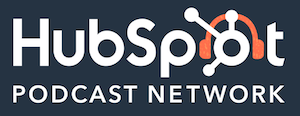How Leaders Are Using Systems And Processes To Grow Their Business The Right Way
How Leaders Are Using Systems And Processes To Grow Their Business The Right Way written by John Jantsch read more at Duct Tape Marketing
Marketing Podcast with Jamie Jay
 In this episode of the Duct Tape Marketing Podcast, I interview Jamie Jay. Jamie is the founder and managing director of Bottleneck Distant Assistants. Founded in 2016, Bottleneck is an outsourcing agency that helps businesses identify, hire, and cultivate their workforce through a carefully designed systematic approach to growth. He’s the author of the book — Quit Repeating Yourself: How Today’s Leaders Are Using Systems and Processes to Grow Their Business The Right Way.
In this episode of the Duct Tape Marketing Podcast, I interview Jamie Jay. Jamie is the founder and managing director of Bottleneck Distant Assistants. Founded in 2016, Bottleneck is an outsourcing agency that helps businesses identify, hire, and cultivate their workforce through a carefully designed systematic approach to growth. He’s the author of the book — Quit Repeating Yourself: How Today’s Leaders Are Using Systems and Processes to Grow Their Business The Right Way.
![]()
![]()
Key Takeaway:
Many business leaders don’t know how to get out of their own way. In this episode, Jaime Jay joins me as he shares how he built a seven-figure business by focusing on the power of creating systems and processes so he could stop doing the wrong things and focus on doing his best work. We dive into how building a solid culture and hiring the right people is extremely crucial to achieving success in your company.
Questions I ask Jamie Jay:
- [1:40] Can you talk to me a little bit about your relationship to the idea of “culture eats strategy”?
- [3:29] How has the concept of values have to have a mission statement changed for leaders?
- [6:05] How does someone adopt a provocative point of view?
- [8:00] What are some of the ways that you’ve found to make your values really practical?
- [12:21] What are some of the things I need to be thinking about if I’m wanting to get digital assistance?
- [17:27] Is there a set of best practices for vetting the right person and onboarding them the right way?
- [19:46] How does your model work?
- [21:26] What are the typical kinds of roles that you find yourself filling for people?
- [21:45] Where can people learn more about your work and get a copy of your book?
More About Jamie Jay:
- Learn more about his company — Bottleneck Distant Assistants
- Get a copy of his book — Quit Repeating Yourself: How Today’s Leaders Are Using Systems and Processes to Grow Their Business The Right Way
Take The Marketing Assessment:
-
- Take the Assessment
Like this show? Click on over and give us a review on iTunes, please!
John Jantsch (00:00): This episode or the duct tape marketing podcast is brought to you by the nudge podcast, hosted by Phil Agnew and brought to you by the HubSpot podcast network. You can learn the science behind great marketing with bite size 20 minute episodes packed with practical advice from admired marketers and behavioral scientist. Nudge is a fast pace, but still insightful with real world examples that you can apply. Her recent issue. Talked about the, the idea of getting your customers, your prospects in the habit of buying from you or listening to you or following you habit based marketing, download, nudge, wherever you get your podcasts. Hello, and welcome to another episode of the duct tape marketing podcast. This is John Jantsch. My guest today is Jamie Jay he’s the founder and managing director of bottleneck distant assistance, a business he founded in 2016. It’s an outsourcing agency that helps businesses identify, hire, and cultivate their workforce through a carefully designed systematic approach to growth. He’s also the author of a book. We’re gonna talk about quit repeating yourself, how today’s leaders are using systems and processes to grow their business the right way. So Jamie, welcome to the show.
Jamie Jay (01:25): Thank you so much. I really appreciate it. John. Super, super excited to be here.
John Jantsch (01:29): So the first chapter is, um, a line. Many people were recognized. I certainly do. I’m a fan of Peter Druckers. In fact, I often cite him as my best biggest mentor, and that is culture. Each strategy. I think his was for lunch, but, uh, talk to me a little bit about, you know, your relationship to that idea.
Jamie Jay (01:49): Yeah. Thank you. Yeah. I’m a big fan of strategy. Strategy’s super important. You can’t run a business without strategy, right? In my opinion, however, culture, in my opinion, and just so happens. I’m a big fan of Peter direct too. Culture really needs to lead the charge because if you’re charging the mountain all by yourself, that’s challenging to say the least, cuz you’re trying to do everything and everything’s done through you. But if you can get 10, 20, 40, a hundred thousand people charging that mountain, the same intentions, the same goals, the same drive, the same vision mission. It makes things so much easier and having a good culture allows for you to be able to do that. And it’s, it’s pretty amazing when, when that starts working and you get out of your own way, so to speak and that culture kind of takes over and it has everything to do with respect and giving people their own voice. We may have the same vision, but people go about doing things a little bit differently. Embrace those differences in my opinion.
John Jantsch (02:51): Yeah. And I think Drucker probably would’ve concluded that, you know, give like, like you said, culture E strategy, meaning that you got a thousand, like really gungho mission driven people. The strategy might be a little shaky, but they’re gonna outperform, you know, that company that has got a brilliant strategy, but doesn’t really have a whole bunch of people that are committed to executing.
Jamie Jay (03:12): Absolutely.
John Jantsch (03:13): So you then of course follow up with the kind of vision mission values, which has frankly been, you know, the staple of the leadership book genre, frankly, for, I don’t know, as long as I’ve been reading books, but so, but in the subtitle you talk about today’s leaders. So how has that concept of, you know, mission, vision values have to have a value sta or a mission statement, value statement. I mean, how has that changed for today’s leaders?
Jamie Jay (03:39): Well, I think we’re in a growing world. The world is shrinking because of technology. Any chance you have to differentiate yourself, maybe create your own category as we did here with distant assistance instead of virtual assistance. But anything you can do to kind of challenge the status quo or take something and tweak it in such a way that it’s kind of, you kind of make it your own. I think now because of technology and the competitive nature of the various industries that you come across without good foundational vision, mission, provocative points of view, it’s really challenging to do that. And I think one bad habit that we’ve had was we’re better. And one of the things, and this is from my good friend, Christopher Lockhead one of the authors of play bigger and amazing book by the way about category design was it was either, I think it was Pepsi.
You know, if you look at their commercials, it was all about Coke. You see the little kid walk up to the Pepsi machine and he gets two Coke bottles and stands on the Coke bottle so he can get the Pepsi machine. But all you’re thinking about is Coke. So we try to get that whole thing of better out. And mission is not just words on a wall. It’s a true belief, a true style. And the closer we can be to that belief and the more authentic we can be, I think you it’ll be easier to develop a culture and unite a team that has a similar drive or a similar understanding of yes, I love that vision. I love what this stands for.
John Jantsch (05:17): You. You mentioned it already. I was going to bring up the idea of the provocative, the point of view. I think that’s a, I think that’s a great way to look at, you know, categorizing, you know, that differentiation, um, years ago, you know, when I was actually trying to figure out, you know, a new way of bringing marketing services to small businesses, which is really just became my life works. I, I just, I think offhand, when in some talk I was giving to a group of small business owners. I said, look, first thing you have to understand is marketing is a system and you could just see all the heads pop off. They’re like, that’s it that’s, what’s been wrong with marketing. Well, you know, and I just, I mean, it was like vivid to me that it was like, wow, that, you know, that resonated, that hit, you know, you could just see the eyes and it really is. I didn’t call it a provocative point of view, but that’s really what I’ve been doing for 20 years. So talk a little bit about, you know, how somebody, I feel like I accidentally stumbled onto it, but how does somebody adopt a, a provocative point of
Jamie Jay (06:12): View? Well, thank you. And thank you for sharing that with so many, cuz that’s a huge lesson. I’m a huge fan, big geek when it comes to systems, processes workflows. Oh my gosh. But when you’re talking about a provocative point of view, two things need to occur with that provocative point of view. Number one is what is the challenge? What is the problem that needs to be addressed? And what is the outcome? What is the desired outcome of being able to overcome that challenge? So in our case, our provocative point of view is we guide business leaders or agency owners who are FOC, who are doing the wrong things, spending their time on the wrong things. So they can focus on doing their best work. Yeah. So that outcome is right, right now, they’re challenged, they’re overwhelmed. They’re trying to do everything. They’re doing emails, they’re doing all this, everything in their business. And we want to try and elevate them to where they can get rid of all that chaos in their brain so they can open them back, open themselves, back up to being creative again, mm-hmm
John Jantsch (07:24): So let’s, let’s go back to, to values again, for a moment the, you shared your values in the book, you know, we’ve, I’ve been a big fan of that as well. I don’t think anybody listening to this or owning a business would say would dispute the idea
Jamie Jay (08:19): First and foremost, I believe in him a hundred percent. Yep.
John Jantsch (08:22): Yep.
Jamie Jay (08:23): As a founder, I wanted to share my belief system and speak in a culture like we did earlier so that others can come in and understand what my original core belief system is. And they could either buy into it or that’s not really me. And that’s first and foremost, be steadfast, super strong. What is your core values? And then practice it. Every single meeting, we go over what our vision is, what our mission is, what our provocative points of view are. And then we go ahead and go into the meeting and we often have different people lead the meetings at different times to give them a chance to participate. Again, we hear their voice. What they say is important to us, but also it’s not, I don’t believe in a work life balance. I just believe in life balance, right by extension. These core values that we have associated with bottleneck, our company are the same core values I live by in my life case in point we, my wife and I were going to buy a new truck.
We went to the first dealer, three of the four core values where yes one was no, we left that dealership. We went to the next dealership. All four were checked off. We bought that truck. And so I practice what I preach every single day. And I’m a big fan of life balance. And if we can introduce what I feel into life, again, being real authentic, it’s so much easier to pass along those core values and have other people, if they didn’t think of something like that, perhaps adopt them or realize that yes, indeed. That’s part of their core values.
John Jantsch (10:00): Yeah. You started off by saying you believe them deeply. And I think that’s the challenge for some people is we’ve all been told. You gotta have these core values. So people sit around a room, think up core values, right?
Jamie Jay (10:17): You know, I was in corporate America for about 12 years. Took me about 11 years to figuring out how to get out. I’m proud to say I’m unemployable anymore and no disregard or no disrespect to corporate America or corporations in general. If that’s what you like good for you. For me, I wasn’t a good fit. We had the big wigs coming from San Francisco to visit our little radio station in central valley, California at the time. And our manager gave us a piece of paper with a mission statement on it and also said, do not raise your hand. Don’t ask any questions.
John Jantsch (10:53):
Jamie Jay (10:54): And I was like, wow, that was just so crazy to me. And they’re coming to inspect as a leader. I would wanna know if there’s challenges in a certain branch or a certain area or a certain thing. Yeah. And it seems a lot of people get closed off on that. And if you have to get a piece of paper to read what the mission statement is, there’s a huge disconnect there.
John Jantsch (11:15): And now let’s hear from a sponsor, you know, today everybody’s online, but are they finding your website, grab the online spotlight and your customer’s attention with Semrush from content and SEO to ads and social media. Semrush is your one stop shop for online marketing build, manage and measure campaigns across all channels faster and easier. Are you ready to take your business to the next level? Get seen, get some rush, visit Semrush that’s Semrush.com/go to try it free for seven days.
Yeah. Let’s uh, let’s pivot a little bit and talk a, a little bit about the idea of distant assistance today. You know, so, so many business owners, I mean, the world has changed in such that, you know, the idea of having a remote team, of having people that you work with, that you maybe never meet in person having clients that you don’t go to their office. You know, I mean that, that is something that, you know, some people in certain industries have been doing for 20 years, but it’s really come to the forefront for pretty much everybody now. So, you know, what are some of the things that if I’m sitting here thinking, you know, everybody else is doing it, I need to get a digital assistant. You know, what should they be thinking about? Or where are they gonna go wrong? You know, where you see people that go, they get this brainstorm and, you know, idea, and then they blow it.
Jamie Jay (12:37): Oh boy. So there, there is quite a bit to unpack there, but I’ll try and be as precise and short as I can. As Christopher Lockett taught me. It’s not a long story, shorter, it’s a long story longer. But what I’ve found is there’s two things. I’m a firm believer in what I call is the 10% role. I am a hundred percent remote. I practice what I preach. I haven’t met anybody except for two people in my organization, in person, my wife and another gentleman that lives here in Springfield, Missouri, yeah. That we hired and everybody else is remote. And I’ve been doing this for 16 years. And so what I found is the first thing is we, as a business leader should understand what that 10% rule is because of COVID. If you look for the silver linings, we’ve found an identified four key roles that can not only reduce overhead, but increased productivity. Several studies have proven this. And so I really liken that because now again, with introduction of technology, boy, oh boy. Imagine where we were 16 years ago. Oh, it was nothing compared to what we are now. So now you have the capability of getting a lot of things done, meeting on zoom or doing all of these really cool things because of the interwebs and all that kind of stuff.
John Jantsch (13:56): Yeah. When I started, we met by phone and fax.
Jamie Jay (13:59): Yeah.
John Jantsch (14:05):
Jamie Jay (14:05): Okay. You know, and we didn’t even have color at the time. It was crazy. But yeah. But yeah. So that’s one thing. The other thing that I think is really critical is you have to start planning, hiring from day one. A lot of people wait too long and then all of a sudden they it’s chaos. There’s overwhelm. And then you hear one of two things, oh, I’ll just do it myself. I can do it faster. Or I don’t have time to train somebody. Right.
John Jantsch (15:22): And I think one of the things that people underestimate, because I, you know, we have a network of consultants. I train a lot of them are just getting started. And that’s one of the first things I tell ’em is look, you, your first job is to get a couple clients. Once you get three clients, your next job is to then create the fulfillment system. You’re gonna teach to somebody else, you know, be because what happens is they get five, six clients. And then they’re like, now I’m just running crazy. And I, you know, so they get, go get a VA and they fail, right. Because you know that
Jamie Jay (15:50): They just wanna hire the rock star. They know how
John Jantsch (15:52): To do everything. Like here, do all this stuff. Right. So it’s it. I love that. Do something as though is the last time you’re gonna do it. But I think one thing that, that I’m sure you agree with on this, but I wanna bring this point back is that when we got really good at outsourcing this stuff, especially me as my business started growing, there was a lot of stuff I didn’t do. Well, I didn’t like doing. And so consequently, it made me grumpy, which then consequently made me not a very good leader, you know,
Jamie Jay (16:25): You know what, our provocative point of view, you just sum that up. Yeah. Stop doing the wrong things. Yeah. So you focus on doing your best work. The wrong things are spending 90 minutes, you know, two hours a day on email handling your own calendar, you know, booking your own travel, you know, making sure all of your projects are being coordinated with your vendors and your team. Like this is a lot of stuff that takes up a lot of that brain room. And if you can just kind of alleviate that. If you remember the, when you were really creative, when you first started out, you didn’t have any clients or anything like that. Right. You had all these ideas that’s
John Jantsch (17:02): Right.
Jamie Jay (17:03): Well, that’s because you didn’t have all this other stuff yeah. Going on in there. So if you can delegate that with confidence because you have systems and processes in place, because you’ve documented everything, it frees you up to be creative, let somebody else worry about the execution. You do what you do best
John Jantsch (17:21): All. I’m gonna ask you another like multi multier or type of question, but is there a kind of set of best practices for, you know, maybe vetting the right person, but also onboarding ’em the right way?
Jamie Jay (17:36): Absolutely. Absolutely. And I feel after 16 years hiring over a thousand people at this point that we’ve pretty much nailed that down. Yeah. We have to pay close attention to what’s happening because obviously when you create a system, things change and you have to, you know, add, you identify friction points. So there’s always that going on in the background. But yes, for as a general principal, it’s really do your background checks or outsource this to somebody else that can do the background checks and do the reference checks and take care of all of that stuff, because it’s really time sensitive. And it takes up a lot of time doing all of that calling. And then we, I just talked to someone three days ago, three days ago, two days ago, Monday. And he said I had 13 people scheduled to come in and interview one showed up. Oh
John Jantsch (18:25): Man.
Jamie Jay (18:26): Imagine all of the time that took. Yeah. Yeah. Right. Yeah. Yeah. So figure out what that is. Do you have the bandwidth to do that or does it make better sense to hire somebody who’s really good at doing that? And the second thing is when you’re getting ready to hire, make sure that you have the tasks written down that just totally drain you of energy. I call this the delegation roadmap. Yeah. And so what we do is we write down every single task we do in a given day. And then we assign two values. Number one, is it something you must do? Or can you delegate this? And number two, does it give you energy or drain you of energy? Anything that you can delegate and drain you of energy. Now start putting those tasks into a description. Now the next part of that is knowing whether or not that’s one job role, two job roles, three job roles. Because if you wanna protect the integrity of your brand that you work so hard for, and it’s your baby, you have to make sure that you put somebody in the right position. Yep. So you don’t wanna hire a personal assistant and say, oh, can you design all my graphics for my social media and post those? Well, no, because this person’s expertise is answering your phone, handling your email, maybe writing proposals for you, whatever that is. Yeah. So you have to be really co careful there, we call that the golden goose rule. Yeah.
John Jantsch (19:46): So talk briefly about your model then. Do, does somebody come to you and you find a person and then you place them as a full-time person or do they come and buy hours? How does your model work? Because I know a lot of people have different models.
Jamie Jay (19:57): Yeah. And, oh man, since COVID came
John Jantsch (21:25): Yeah. No, that’s awesome. What are the typical kinds of roles that you find yourself filling for people?
Jamie Jay (21:29): There’s three main roles, personal assistant customer service representative and project coordinator. And we’re gonna be launching a bookkeeper in Q4 of this year as a time of this recording. It’s August 31st. Yeah. Of 22. So yeah. In about another two months, we’ll launch the book bookkeeper commission.
John Jantsch (21:45): Awesome. Well tell people where they can find out to all the ins and outs of a bottleneck.
Jamie Jay (21:49): You can go to bottleneck.online.
John Jantsch (21:51): All right. bottleneck.online. And then the book itself quit repeating itself. I know is on Amazon, probably other folks, other places as
Jamie Jay (21:57): Well, pretty much anywhere you wanna get a book, you can go there, but yeah, Amazon’s usually the easiest, but yeah. Thank you. Quit repeating yourself. Dot com. You can learn more about it there. Yeah.
John Jantsch (22:07): Awesome. Well, Jamie, thanks for supp by the duct tape marketing podcast. And hopefully we’ll run into you one of these days out there on the
Jamie Jay (22:12): Road, John, thank you so much.
John Jantsch (22:16): Hey, and one final thing before you go, you know how I talk about marketing strategy strategy before tactics? Well, sometimes it can be hard to understand where you stand in that what needs to be done with regard to creating a marketing strategy. So we created a free tool for you. It’s called the marketing strategy assessment. You can find it @ marketingassessment.co. check out our free marketing assessment and learn where you are with your strategy today. That’s just marketing ssessment.co I’d love to chat with you about the results that you get.
Sign up to receive email updates
Enter your name and email address below and I’ll send you periodic updates about the podcast.
This episode of the Duct Tape Marketing Podcast is brought to you by the HubSpot Podcast Network and Semrush.

HubSpot Podcast Network is the audio destination for business professionals who seek the best education and inspiration on how to grow a business.
![]()
Everybody’s online, but are they finding your website? Grab the online spotlight and your customers’ attention with Semrush. From Content and SEO to ads and social media, Semrush is your one-stop-shop for online marketing. Build, manage, and measure campaigns —across all channels — faster and easier. Are you ready to take your business to the next level? Get seen. Get Semrush. Visit semrush.com/go to try it free for 7 days.





